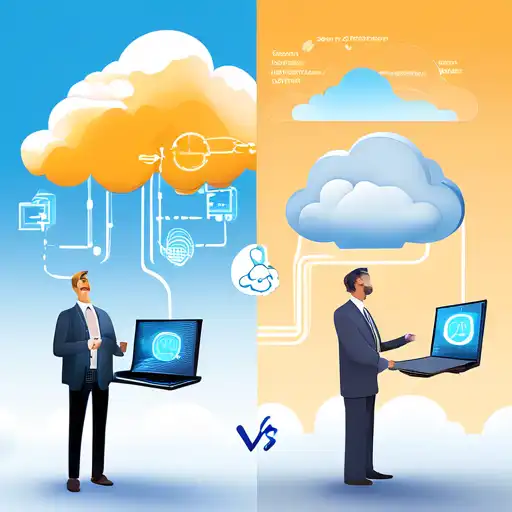Introduction to Edge Computing and Cloud Computing
In the rapidly evolving world of technology, understanding the differences between edge computing and cloud computing is crucial for businesses and individuals alike. Both technologies play pivotal roles in data processing and storage, but they cater to different needs and scenarios.
What is Edge Computing?
Edge computing refers to the processing of data near the source of data generation, rather than relying on a centralized data-processing warehouse. This approach minimizes latency, reduces bandwidth use, and enhances privacy and security.
What is Cloud Computing?
Cloud computing, on the other hand, involves the delivery of computing services—including servers, storage, databases, networking, software—over the internet ('the cloud') to offer faster innovation, flexible resources, and economies of scale.
Key Differences Between Edge Computing and Cloud Computing
While both edge computing and cloud computing are designed to process data, their methodologies and applications differ significantly.
Data Processing Location
Edge computing processes data locally, close to where it is generated, which is ideal for real-time applications. Cloud computing processes data in centralized data centers, which can introduce latency.
Latency
Due to its local processing nature, edge computing significantly reduces latency, making it suitable for time-sensitive applications. Cloud computing, while scalable, may not meet the low latency requirements of certain applications.
Bandwidth Usage
Edge computing reduces the need to send large amounts of data over the network, thereby saving bandwidth. Cloud computing relies on constant data transmission to and from the cloud, which can consume significant bandwidth.
Security and Privacy
Edge computing can offer enhanced security and privacy by keeping sensitive data local. Cloud computing, while secure, involves transmitting data over the internet, which can pose risks.
Choosing Between Edge Computing and Cloud Computing
The choice between edge computing and cloud computing depends on the specific needs of a business or application. Factors to consider include latency requirements, bandwidth constraints, and data sensitivity.
When to Use Edge Computing
Edge computing is ideal for applications requiring real-time processing, such as autonomous vehicles, industrial IoT, and smart cities.
When to Use Cloud Computing
Cloud computing is better suited for applications that require vast storage and computing power, such as big data analytics, web hosting, and enterprise applications.
Conclusion
Both edge computing and cloud computing offer unique benefits and are suited to different applications. Understanding their key differences is essential for leveraging the right technology to meet specific needs. As technology continues to evolve, the integration of both edge and cloud computing will likely become more prevalent, offering the best of both worlds.
